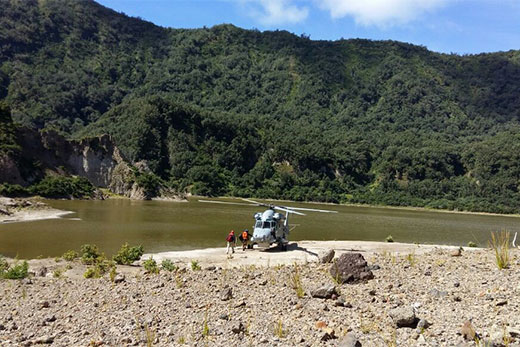Upgrading New Zealand's first line of defence against tsunamis is just one of a number of scientific works taking place in the Kermadec Islands.
The New Zealand Defence Force has recently completed its first mission supported the work taking place at the islands.
An NZDF Seasprite helicopter lands near a crater lake on Raoul Island. Photo Supplied.
The mission involved Royal New Zealand Navy vessel HMNZS Otago, along with one of the Royal New Zealand Air Force's newly-acquired Seasprite helicopters.
Their role involved providing logistical support to the Department of Conservation, MetService and GNS Science, and was the first time the helicopter had been used.
Lieutenant Commander Andrew Sorensen, Commanding Officer of the Otago, has no doubts regarding the NZDF's contribution.
'The NZDF's support was the linchpin for all this scientific work to be completed.
'Operating a Seasprite from our vessel has further increased our ability to support other government agencies.”
One of the primary tasks for the GNS team was to upgrade the two tsunami gauge sites on Raoul Island.
'With the Seasprite we were able to access these hard-to-reach areas. Otago's crew also helped our team complete the maintenance work on the gauges,” says GNS Science volcanologist Brad Scott.
The Seasprite also flew a GNS volcano chemist to Green Lake, one of two crater lakes on Raoul Island, to check for seismic activity and to repair the seismic station there.
'Our work in the Kermadecs is vital for the public safety in New Zealand. The tsunami gauges are the country's first line of defence against tsunamis and we are grateful for NZDF's support,” says Brad.



0 comments
Leave a Comment
You must be logged in to make a comment.